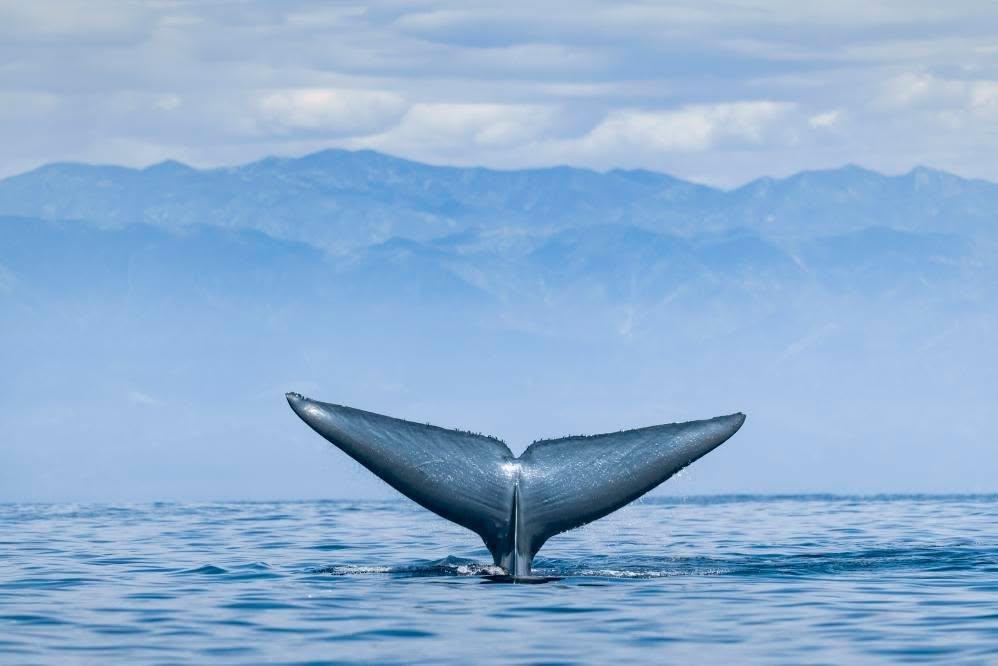
Sea More Species? Genetic Differences Discovered in Blue Whale Populations
Blue whales (Balaenoptera musculus) can reach a length of up to 30 meters and weigh over 180 tons, making them the largest known whale species to ever have existed on Earth. These majestic marine mammals can be found in all of the world’s oceans but prefer cold, nutrient-rich waters, which they visit in the summer months before migrating to warmer regions for the winter. In the 20th century, the blue whale was severely threatened by intensive whaling, and although commercial whaling is now largely banned, populations are only recovering slowly and the species is still included on the Red List.
“From a genetic point of view, such a dramatic decline in individuals means that the genetic diversity within the blue whale populations also decreases. Subsequently, this increases the effects of inbreeding, as harmful mutations are now more pronounced than before,” explains Dr. Magnus Wolf, the study’s lead author from the SBiK-F and Goethe University Frankfurt.
Together with his colleagues Dr. Menno J. de Jong and Prof. Dr. Axel Janke, Wolf analyzed the genomes of 33 individual blue whales from all over the world. “The blue whale populations in the North Atlantic and North Pacific are currently regarded as a single subspecies, although they are separated by continental land masses and their vocalizations can be clearly distinguished acoustically. However, our results suggest that these whales have embarked on separate evolutionary paths since the last ice age,” says Wolf, and he continues, “The analysis of the genomes reveals significant genetic differences between the two populations. We therefore propose a new subspecies name for the North Pacific population: Balaenoptera musculus sulfureus.” Blue whales used to be called “sulfur bottoms” in some regions due to the yellowish layer of algae on their underside, which is reminiscent of the pale yellow color of the chemical element sulfur. The new name honors this historical nickname, says the study.
The research further examines the overall genetic health of blue whales – giving cause for optimism as well as caution. “Although we found common signs of inbreeding and a general reduction in genetic diversity, the blue whales we examined have retained a high genetic variance, which is good news for the survival of these behemoths,” explains senior author Janke.
The results underscore the importance of genomics research in nature conservation and highlight the need for international cooperation. “Our work can serve as a ‘blueprint’ for conservation genomics. It demonstrates how the status of difficult-to-observe species such as the blue whale can be successfully investigated using genomic analyses. These techniques allow us to tailor conservation measures to specific populations and respond before population decline and inbreeding become a problem,” adds Wolf in conclusion.
Publication: Wolf, M., de Jong, M.J. and Janke, A. (2025), Ocean-Wide Conservation Genomics of Blue Whales Suggest New Northern Hemisphere Subspecies. Mol Ecol, 34: e17619. https://doi.org/…
The Senckenberg Gesellschaft für Naturforschung (Senckenberg Nature Research Society), a member of the Leibniz Association, has studied the “Earth System” on a global scale for over 200 years – in the past, in the present, and with predictions for the future. We conduct integrative “geobiodiversity research” with the goal of understanding nature with its infinite diversity, in order to preserve it for future generations and use it in a sustainable fashion. In addition, Senckenberg presents its research results in a variety of ways, first and foremost in its three natural history museums in Frankfurt, Görlitz, and Dresden. The Senckenberg natural history museums are places of learning and wonder and serve as open platforms for a democratic dialog – inclusive, participative, and international. For additional information, visit www.senckenberg.de.
Senckenberg – Leibniz Institution for Biodiversity and Earth System Research // Senckenberg Gesellschaft für Naturforschung
Senckenberganlage 25
60325 Frankfurt
Telefon: +49 (69) 7542-0
Telefax: +49 (69) 746238
http://www.senckenberg.de
Leitung Pressestelle & Social Media
Telefon: 06975421434
E-Mail: judith.joerdens@senckenberg.de
![]()




